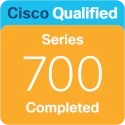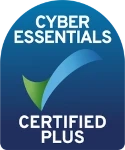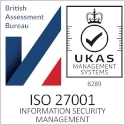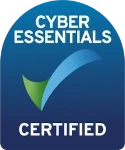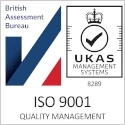15
+
YEARS OF
EXPERIENCE
1000
+
SUCCESSFUL
Projects
80
+
Satisfied
Clients

Procurement, Licensing, and Lead Times: A Comprehensive Guide by TechCloud IT Services L.L.C.
In the fast-paced world of technology, businesses often find themselves navigating the complexities of procurement, licensing, and lead times. At TechCloud IT Services L.L.C., also known as Cloud Technologies, we understand how crucial it is for organizations to manage these elements effectively. This guide aims to help potential clients understand the interconnections between procurement, licensing, and lead times, and how to optimize these processes for better business outcomes.
Understanding Procurement
Procurement is the process of acquiring goods, services, or works from an external source. In the IT sector, procurement involves sourcing hardware, software, and services necessary for business operations. Here are the key components of procurement:
1. Types of Procurement
There are two main types of procurement:
- Direct Procurement: This refers to the purchase of goods or services that are essential for the production of a company’s products or services. For instance, servers, software licenses, and IT support services fall under this category.
- Indirect Procurement: This includes all purchases that are not directly tied to production but are essential for operations. Examples include office supplies, maintenance services, and IT consulting.
2. The Procurement Process
The procurement process typically involves several steps:
- Identifying Needs: Determine what products or services are necessary for the organization.
- Supplier Selection: Evaluate potential suppliers based on their reliability, price, quality, and service offerings.
- Request for Proposals (RFPs): Send out RFPs to shortlisted suppliers to gather detailed information about their offerings.
- Evaluation and Negotiation: Assess the proposals received and negotiate terms, prices, and conditions with the selected supplier.
- Purchase Order Creation: Once terms are agreed upon, create and issue a purchase order to formalize the agreement.
- Delivery and Receipt: Ensure that the ordered goods or services are delivered as agreed and confirm their receipt.
- Review and Evaluation: After procurement, evaluate the supplier’s performance to inform future procurement decisions.
By leveraging a structured procurement process, organizations can ensure they acquire the right products and services at the best prices, ultimately enhancing operational efficiency.







Licensing: A Critical Aspect of IT Procurement
Licensing is an essential part of the procurement process, particularly in the IT sector. Understanding software licensing is crucial for compliance and cost management. Here’s what you need to know about licensing:
1. Types of Software Licenses
There are several types of software licenses, and understanding them is vital for effective procurement:
- Perpetual Licenses: This type grants the buyer the right to use the software indefinitely after a one-time purchase.
- Subscription Licenses: These licenses require periodic payments (monthly or annually) for continued access to the software. They often include updates and support.
- Site Licenses: These allow organizations to use software across multiple devices within a specific location.
- Volume Licenses: Designed for organizations that need multiple copies of software, volume licensing offers discounts based on the number of licenses purchased.
2. Compliance and Legal Considerations
Ensuring compliance with software licensing agreements is crucial. Non-compliance can lead to legal repercussions, fines, and damage to an organization’s reputation. Organizations must:
- Keep Accurate Records: Maintain detailed records of software purchases, licenses, and renewals.
- Regular Audits: Conduct regular audits to ensure compliance with licensing agreements and identify any unlicensed software.
- Understand Licensing Terms: Familiarize yourself with the terms and conditions of each software license to avoid unintentional violations.
3. The Role of TechCloud in Licensing
At TechCloud IT Services L.L.C., we provide expert guidance on software licensing. Our team helps clients navigate the complexities of software licenses, ensuring compliance while optimizing costs. Whether you need assistance with selecting the right license type or managing renewals, our expertise will streamline the process.
Lead Times: Understanding the Timeline for Procurement
Lead time refers to the amount of time it takes to complete a procurement process, from identifying needs to receiving the ordered products or services. Understanding lead times is crucial for effective planning and operations.
1. Factors Affecting Lead Times
Several factors can influence lead times in procurement:
- Supplier Availability: The availability of the desired products or services can significantly impact lead times. High demand or limited stock can result in longer wait times.
- Order Complexity: Complex orders requiring customization or multiple components may take longer to fulfill.
- Geographical Location: The distance between the supplier and the organization can affect shipping times and lead times.
- Market Conditions: Economic factors, such as supply chain disruptions or material shortages, can also impact lead times.
2. Managing Lead Times
Organizations can take several steps to manage lead times effectively:
- Vendor Relationships: Building strong relationships with suppliers can lead to better communication and quicker response times.
- Advance Planning: Anticipate future needs and place orders well in advance to account for potential delays.
- Inventory Management: Implementing effective inventory management practices can help ensure that critical supplies are on hand, reducing reliance on lead times.
3. How TechCloud Can Assist
TechCloud IT Services L.L.C. can help businesses manage procurement lead times effectively. Our experienced team will work with you to assess your needs, identify reliable suppliers, and develop strategies to minimize lead times. With our support, you can ensure timely access to the technology and services necessary for your operations.
IT Setup for New Business
Set up a secure, scalable IT infrastructure for your new business, ensuring efficiency, compliance, and future growth.Assessing requirements
Analyze business needs to design a tailored IT infrastructure that supports efficiency, scalability, and long-term growth.Internet and Networking
Set up reliable, high-speed internet and secure networking solutions to support business connectivity and collaboration.
Integrating Procurement, Licensing, and Lead Times
To optimize your IT strategy, it’s essential to integrate procurement, licensing, and lead times. Here’s how these elements work together:
- Alignment with Business Objectives: Ensure that your procurement process aligns with your overall business objectives. This alignment will facilitate effective licensing decisions and better management of lead times.
- Data-Driven Decision Making: Use data analytics to inform procurement decisions, assess licensing needs, and monitor lead times. Data-driven insights enable organizations to make informed choices that drive efficiency and cost savings.
- Continuous Improvement: Regularly review and refine your procurement and licensing strategies to identify areas for improvement. Implement feedback loops to ensure that lessons learned are applied to future procurement processes.
By integrating these components, organizations can create a seamless procurement experience that maximizes value while minimizing risks.
Conclusion
Procurement, licensing, and lead times are interconnected elements that play a vital role in the success of any organization. Understanding these components allows businesses to make informed decisions, optimize their IT strategies, and enhance overall efficiency.
At TechCloud IT Services L.L.C., we offer comprehensive support in navigating the complexities of procurement and licensing while effectively managing lead times. Our expertise ensures that your organization acquires the right technology solutions aligned with your business goals.
If you’re ready to enhance your procurement process, contact Cloud Technologies today to learn more about our services and how we can assist you.
As a result of increasing number of business expanding to the United Kingdom market we are offering services of Procurement licensing and lead times in London

answer time
satisfaction
score
on initial call
same business
day


